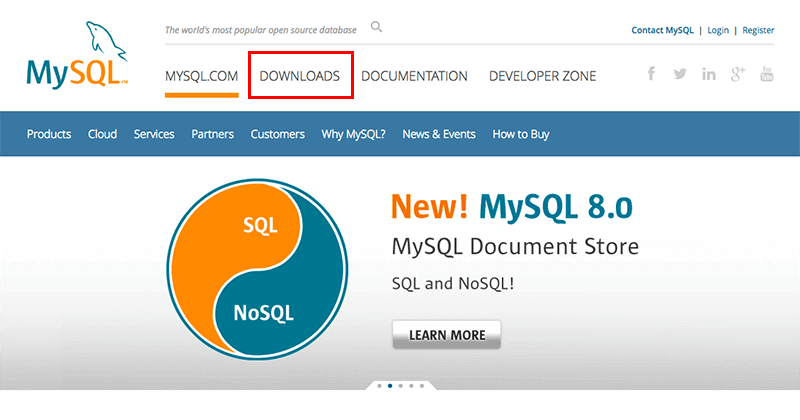- Mysql-5.6.50-osx10.8-x8664.dmg installs MySQL into /usr/local/mysql-5.6.50-osx10.8-x8664/. The following table shows the layout of the installation directory. Table 2.1 MySQL Installation Layout on OS X Directory Contents of Directory bin, scripts mysqld server, client and utility programs data Log files, databases.
- Remove MySQL completely from Mac OSX. I installed by downloading a DMG archive from dev.mysql. I am going to install mysql version 5.6, and installing via the.
Mysql 5.6 Mac Download
This page contains the steps for downloading and installing MySQL.
Mysql 5.6 Mac Dmg Free MySQL for Mac is designed for enterprise organizations delivering business critical database applications. It gives corporate developers, DBAs and ISVs an array of new enterprise features to make more productive developing, deploying, and managing industrial strength applications.
If you already have MySQL installed you can skip this page. But if you need to install MySQL, this page will help you.
Download MySQL
First step is to download MySQL from the MySQL website.
This link takes you to the MySQL Community Server. This edition is a freely downloadable version MySQL. There are also commercial versions available, however, this tutorial uses the free version.
To check that your platform can run MySQL, see Supported Platforms.
Install MySQL
Once you've downloaded MySQL, the next step is to install it.
The following steps were taken while I installed MySQL 5.6 on my Macbook Pro (MySQL 5.6.24 to be precise). The exact steps taken may differ slightly — this will depend on the MySQL version that you're installing and the operating system that you're installing on to. If you get stuck, see the installation section from the MySQL reference manual.
Extract the Installer Package
Launch the Installer
Introduction
Accept Licence
Confirm Licence
Installation Type
Enter Password
Installing...
Installation Successful
Start MySQL Server
Mysql 5.6 Mac Dmg Shortcut
Now that you've installed MySQL, you should start it. On the Mac, you can do this via the System Preferences.

Open MySQL System Preferences
MySQL System Preferences
Start MySQL
Linux/Unix/Mac
Linux/Unix systems can use the mysqld_safe command to start MySQL. You can also use this method on the Mac, using Terminal.
To do this:
- Open Terminal, and type
cd /usr/local/mysql(or where ever MySQL is installed on the machine). - Then type
sudo ./bin/mysqld_safeand enter a password if prompted.
Windows
Windows users can go to the command prompt and type the following:
Mysql 5.6 Mac Dmg Download
Or where ever MySQL is installed on the machine. Also change the version number to the version you're using.
Windows users can stop MySQL with the following command:
Next we'll take a look at MySQL Workbench. MySQL Workbench is a graphical tool that allows you to perform all sorts of tasks with MySQL.
